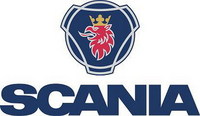Scania to Test Electric Hybrid Buses Together with Stockholm Public Transport Company SL
STOCKHOLM, Sweden--In collaboration with Storstockholms Lokaltrafik (SL), the regional public transport company in Stockholm, Scania (STO:SCVA) (STO:SCVB) will carry out large-scale testing of electric hybrid buses. The tests will begin during 2008 and run for at least one year. A prototype is expected to be completed in May 2007.
The Swedish Energy Agency is supporting Scania’s hybrid technology and contributes with more than SEK 16 million for the development of city buses powered by Scania’s hybrid technology. The technology involves fuel savings of 25 percent or more.
“Carbon dioxide emissions from traffic can be reduced by lowering fuel consumption and transitioning to renewable vehicle fuels,” says Hasse Johansson, Head of Research and Development at Scania.
“Scania combines reduced fuel consumption with renewable fuel in its hybrid technology. This technology is expected to save at least 25 percent fuel. The engine − a high-efficiency diesel engine − is powered by ethanol, a renewable fuel. The technology is robust and dimensioned to last for the normal service life of the bus. We regard this as an optimal combination for city traffic, with its constant stopping and acceleration.
“In a longer perspective, innovations such as hybrid drive will help us to meet stricter environmental targets for city traffic. Even today, however, we can take a major step towards lowering the environmental impact of public transport by operating on such renewable fuels as ethanol and rapeseed methyl ester (RME),” Mr Johansson concludes.
In Scania’s hybrid technology, power is generated by a normal ethanol-fuelled diesel engine. Mechanical energy is transformed into electrical energy via a generator. The bus is propelled by an electrical motor, which also serves as a generator when the vehicle is braking. Energy is stored in supercapacitors, which have significantly longer service life than today’s batteries.



